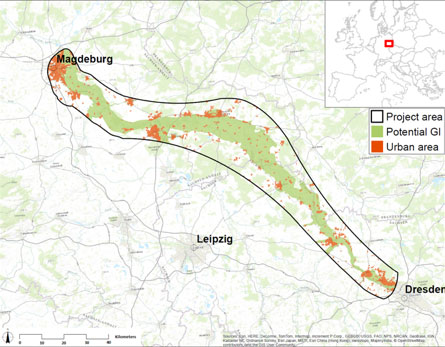- Client: European Environment Agency (EEA)
- Implementation period: January, 2015 - December, 2016 (Completed)
- Geographic coverage: Belgium
- Theme: Climate Change, Environment
- Topic: Adaptation and Resilience
- Experts: Lisa Eichler, Jurgen Vermeulen
Will Green Infrastructure (GI) be able to protect us from flooding?
The project focused on the potential for implementing GI in European floodplains, and the results are to be published as an EEA technical report early 2016. It analysed various options for reducing risks of flooding with GI solutions (e.g. natural water retention measures (NWRMs) and then presents evidence of whether natural solutions provide cost-efficient flood protection when compared to traditional grey infrastructure solutions.
Key findings of the research can be summarised as follows:
- The cost efficiency ratio of GI solutions for flood management is generally higher than for grey alternatives, in particular due to the multiple co-benefits of GI solutions. But accurate assessments of costs and benefits require site-specific analyses.
- Significant future opportunities for GI exist in European floodplains. The mapping exercise carried out for this research has shown that the mapped areas along the Vistula (Poland), Elbe (Germany) and Rhône (France) with the right characteristics for serving as a floodplain would be able to cope with the excess of floodwaters for a 1/100 year event, even with future climate change scenarios up to 2050 taken into account.
- There is a need for developing a coherent analytical framework for guiding decision-makers on green versus grey infrastructure solutions. As planners explore how to accommodate infrastructure demands in the future, the lesson is clear: think about green before investing in grey. Additionally, good practices should be shared among different authorities and Member States.
